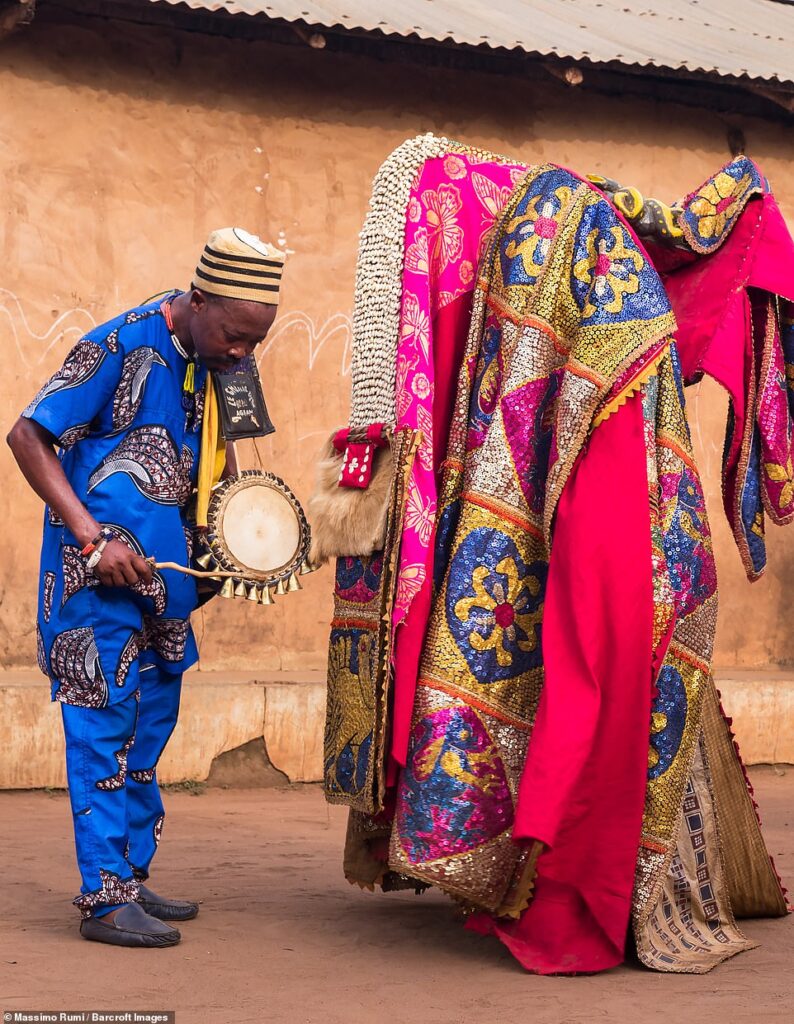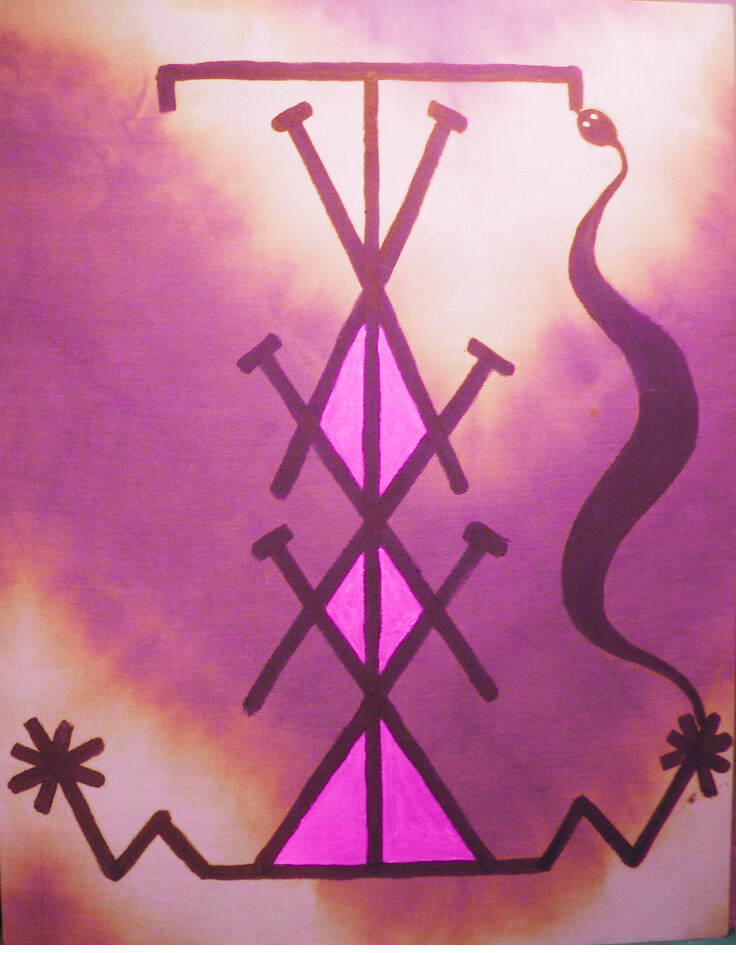My interest in African Pagan religions allowed me to scratch the surface of Yoruba practices, which resulted in this brief write-up. Though distinct in their cultural and religious contexts, Yoruba religion and Hinduism share similarities that reflect common patterns in human spirituality.
The Pantheons
The Yoruba pantheon consists of deities, spirits, and ancestors that influence the spiritual and cultural traditions of the Yoruba people in southwestern Nigeria. At the head is Olodumare, the supreme deity and creator of the universe, who delegates the management of the world to the Orishas, a group of powerful intermediary deities. Each Orisha governs specific aspects of nature and human life. Notable Orishas include Chango (Shango; Xango, Oshun), the god of thunder and kingship; Ogun, the god of iron and war; Yemoja, the nurturing goddess of rivers and motherhood; Oshun, the goddess of love and fertility, to name a few.
Similarly, Hinduism recognizes a supreme entity, Brahman, which manifests through various deities, including Brahma, Vishnu, Shiva, and Durga, and their forms and manifestations. Also included are Ganas such as Ganesha, Nandi, and Hanuman, which signify intelligence, patience, superhuman strength, and devotion. Each of these deities oversees different aspects of the universe and human life.
Worship and ritual practices in both religions involve a deep connection to their deities. Yoruba worship of Orishas includes elaborate rituals, offerings, and festivals, where devotees seek blessings, protection, and guidance. In Hinduism, similar practices are observed through puja, a ritual involving offerings and prayers to the gods and goddesses, performed to gain favor, protection, and spiritual merit. Additionally, both systems recognize the phenomenon of divine possession during rituals. In Yoruba ceremonies, devotees may enter trance states believed to be induced by an Orisha taking control of their bodies. This is also reflected in certain Hindu traditions, particularly those involving deities like Kali or Durga, where devotees may enter trances interpreted as the deity manifesting through them.
In much of the Yoruba spiritual worldview, Osanyin is one indispensable divinity, and Orisa is linked explicitly to herbal medicine/medicines. He holds near-sacred status because of his vast plant-life expertise and understanding of the medicinal uses that can be derived from them, He is the protector of our forests. Dhanvantari, the physician-god in Hinduism – who brought with him Ayurveda and the elixir of life (Amrita), is similar to Osanyin; as well, Vaidyanatha- a form of Shiva exists associated with health/healing. Two other examples would be Dhanvantari and Vaidyanatha in the Hindu religious tradition, which represented medicinal knowledge, as were, more generally, Osanyin functions among Yorubas.
Role of Ancestors
The concept of reincarnation is another common thread between Yoruba religion and Hinduism. Yoruba belief holds that ancestors can be reincarnated within the family lineage, emphasizing the cyclical nature of life and continuity within the community. Hinduism views reincarnation as the Atman undergoing cycles of birth, death, and rebirth – samsara – until it achieves liberation – moksha. This belief in the cyclical nature of life depicts the importance of living in harmony with spiritual laws or natural order and seeking spiritual growth.
Ancestor worship plays a significant role in both traditions, though it manifests slightly differently. In Yoruba religion, ancestors are revered and believed to have the power to influence the living, depending on how they are honored. Hinduism also includes practices of ancestor worship, particularly during the Shraddha rituals, where offerings are made to ensure the well-being and minimize interference of deceased ancestors. This practice highlights both cultures’ ongoing relationship between the living and the dead. In Yoruba spirituality, the Egungun, or ancestral spirits, are believed to guide and protect the living. The Yoruba also acknowledge Ajogun, malevolent spirits associated with misfortune, which are managed through rituals. Two key spiritual concepts in Yoruba belief are Ase, the life force that enables all action, and Ori, a person’s inner spiritual guide that shapes their destiny. There are some similarities between Native American practices and beliefs, which may be explored in another write-up.
Rituals
Yoruba spirituality is deeply rooted in rituals that connect the physical and spiritual worlds, honoring the Orishas, ancestors, and various spiritual forces. Central to these practices are offerings, known as “ebo,” which include items such as food, drinks, and animals presented to the Orishas, ancestors, or spirits to seek their favor and protection. Divination, mainly through the Ifa system, is another crucial aspect, allowing priests – Babalawos or “fathers of wisdom” – to interpret the will of the Orishas and provide guidance on personal or communal matters. Trance and possession are also significant, where devotees may enter altered states believed to be induced by an Orisha, enabling direct communication with the deity. This often occurs during rituals accompanied by drumming, singing, and dancing.
Sacred music and dance are integral to Yoruba rituals, with specific rhythms and movements used to invoke the Orishas and create a spiritually charged atmosphere. Drumming is vital, with each rhythm associated with a particular deity. Chango’s accessories include a drum, also seen as an axe associated with sound. The imagery evokes Shivas Damaru at first glance. Purification and cleansing rituals are also performed to rid individuals or spaces of negative energies, using sacred substances, herbs, prayers, and incantations.
An example of a Yoruba ritual is the Orisha festival, a community event dedicated to a specific deity, such as Chango. These festivals include processions, offerings, music, dance, and dramatic reenactments of myths associated with the Orisha. One can explore the parallels between Southern Indian Hindu theyyam and the Yoruba rituals to better understand the connection between the material and the spiritual. Devotees in both cultures participate by wearing colors or symbols representing the deity, ensuring the community’s spiritual and physical well-being.
In Hinduism, several rituals bear similarities to those in Yoruba spirituality. Puja is a central ritual involving offerings of food, flowers, and incense to deities, performed at temples or home altars to seek blessings and favor. This ritual parallels the Yoruba practice of ebo, where offerings are made to the Orishas and ancestors to gain their protection and assistance. Divination in Hinduism, such as astrology and reading omens, helps individuals gain insights into their future and understand divine will, similar to the Yoruba Ifa divination system which interprets the will of the Orishas through sacred patterns. The Babalawo manipulates sixteen sacred palm nuts on a circular, symbol-inscribed divination tray, where powder marks represent the resulting patterns. Betel leaf astrology, or Tambula Prasna, is a divination method which is practiced in the southern parts of in the Indian subcontinent as well. Trance and possession also feature in both traditions; in Hinduism, devotees might enter trance states or exhibit signs of divine possession during rituals involving deities like Kali or Durga, akin to Yoruba practices where devotees welcome the divine Orisha.
Sacred music and dance are central to Hindu and Yoruba rituals, invoking deities or Orishas and creating a spiritual atmosphere. Purification and cleansing rituals in Hinduism, such as bathing in sacred rivers or performing ablutions, are practiced to cleanse oneself of impurities before participating in religious activities. These rituals resemble Yoruba purification rituals, using herbs and sacred substances to remove negative energies and ensure spiritual purity. However, in the yogic tradition, more nuanced attention is paid to purifying the five elements constituting the universe.

Comparative Cosmology
Cosmology in both religions also reveals similarities. Yoruba cosmology divides the universe into realms, including the earthly world and the spiritual world inhabited by Orishas and ancestors. Spiritual forces are believed to interact with the physical world, influencing human affairs. Hindu cosmology similarly describes multiple realms, such as the physical world – Bhuloka – the heavens -Swarga – and the netherworlds – Patala – with karma and grace playing crucial roles in shaping life and the universe.
Finally, both religions strongly emphasize sacred symbols and art in their spiritual practices. The artistic expressions serve as tangible connections to the divine, reinforcing the spiritual beliefs of their followers.
Challenges
These parallels between Yoruba religion and Hinduism highlight shared human themes in understanding the divine, ritual practices, and cosmology. However, there has been much adaptation and, therefore, dilution of both belief systems’ original or intended practices and purpose.
The arrival of Islam and Christianity in the Yoruba region in the mid-nineteenth century had varied albeit negative impacts. Islam integrated with Yoruba indigenous beliefs, leading to a syncretic form known as “Yoruba-Islam,” which spread peacefully and allowed for the continued worship of Orishas, sometimes viewed as angels. Early Christian missionaries imposed significant cultural changes, including renouncing practices like polygamy and promoting ethical values that conflicted with Yoruba traditions.
The later missionary movement in the 1920s and 1930s succeeded in attracting converts by offering Christian solutions to spiritual needs while condemning traditional Yoruba practices and Orishas as demonic. By the 1950s, the Yoruba were roughly equally divided between Islam and Christianity. Traditional Orisha cults diminished, but some festivals and practices persisted. Despite this, the Yoruba religion was often viewed by dominant Muslim and Christian groups as inferior or demonic, though it continued to influence regions like Cuba and Brazil.
In contemporary times, some Christians and reformist Muslims have sought to stigmatize and eliminate remnants of the Yoruba religion. Yoruba-Islam has increasingly aligned with normative Middle Eastern Islam. At the same time, some Christians have reinterpreted Orishas as historical figures rather than deities, allowing them to be respected without challenging religious norms. In some regions, Yoruba spirituality has syncretized with other religious traditions. In the Americas, especially in Brazil, Cuba, and Trinidad and Tobago, Yoruba religious elements have blended with Catholicism, indigenous beliefs, and other African spiritual practices. For instance, Santería, an Afro-Caribbean religion developed in Cuba, blends Yoruba spiritual practices with Catholic elements, preserving and adapting the Yoruba pantheon and rituals while integrating them with Christian symbolism. Also, the Yoruba-derived religion of Candomble in Brazil incorporates Orishas alongside Catholic saints.
Hinduism is facing similar challenges regarding the role of Islam and Christianity in the conversion, dilution, and erasure of Hindu practices and beliefs in the subcontinent and the diaspora. In sum, the Yoruba and Hindu beliefs demonstrate how different pagan cultures depict similar spiritual conclusions despite their geographical and cultural differences, suggesting a shared fabric of indigenous beliefs before the aggressive advent of Abrahamic faiths. Practitioners and supporters of ancient faiths must work diligently to preserve the essence of these cultural traditions.
References
Adegbite, A. (1988). “The Drum and Its Role in Yoruba Religion.” Journal of Religion in Africa 18(1):15–26.
Ayorinde, C. (2004). Santería in Cuba: Tradition and Transformation. The Yoruba Diaspora in the Atlantic World, pp. 209–230.
Ephirim-Donkor, A. (2021). African spirituality: On becoming ancestors. Rowman & Littlefield.
Dopamu, A. (1999). The Yoruba religious system. Africa Update, 6(3), 2–17.
Huntington, V. A. (2002). Bodies in contexts: Holistic ideals of health, healing, and wellness in an* American Orisha Community. The University of Iowa.
Peel, J. D. Y. (2015). Christianity, Islam, and Orisa-Religion: Three Traditions in Comparison and Interaction. California: University of California Press. p. 214-232.
Westerlund, D. (2005). Yoruba Divinities. In African Indigenous Religions and Disease Causation (pp. 121–148). Brill.
Image: Ancestral African Image, internet
